Loading...
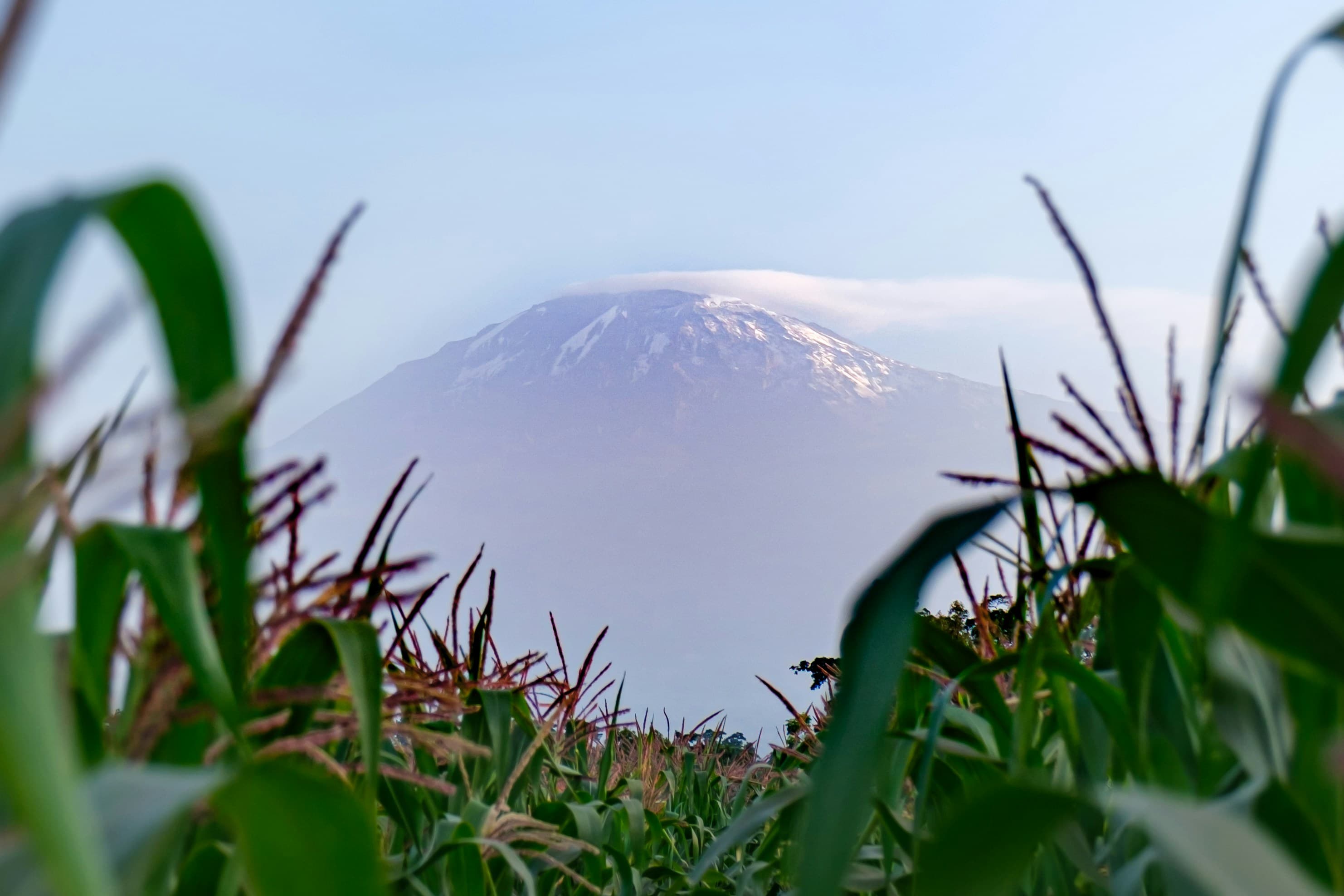
Mount Kilimanjaro Trekking - Marangu Route 6 Days
Conquer Africa's highest peak and one of the world's Seven Summits on this challenging 6-day Kilimanjaro trek via the scenic Marangu Route, known as the "Coca-Cola Route." Summit Uhuru Peak at 5,895 m...
Photo Gallery

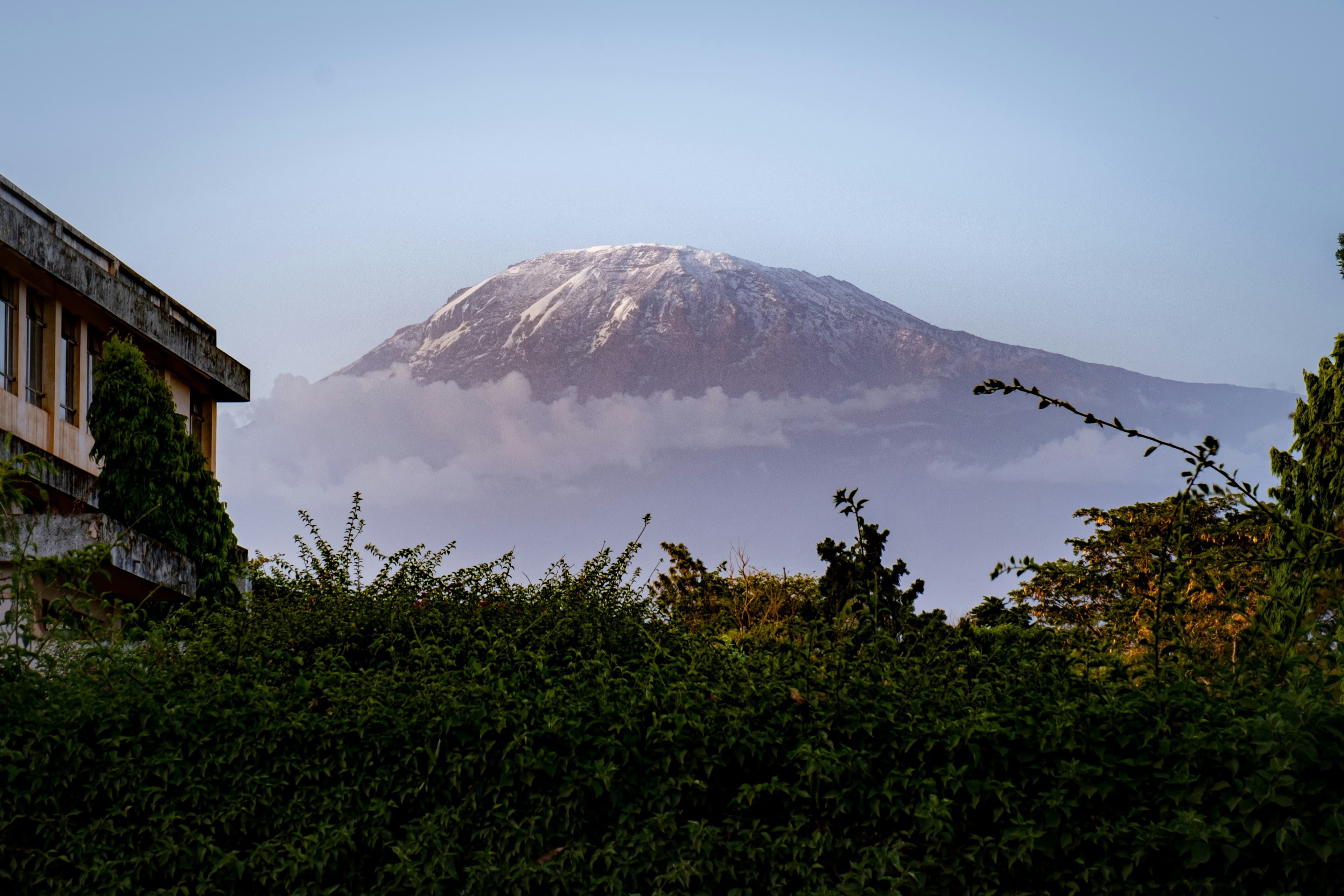
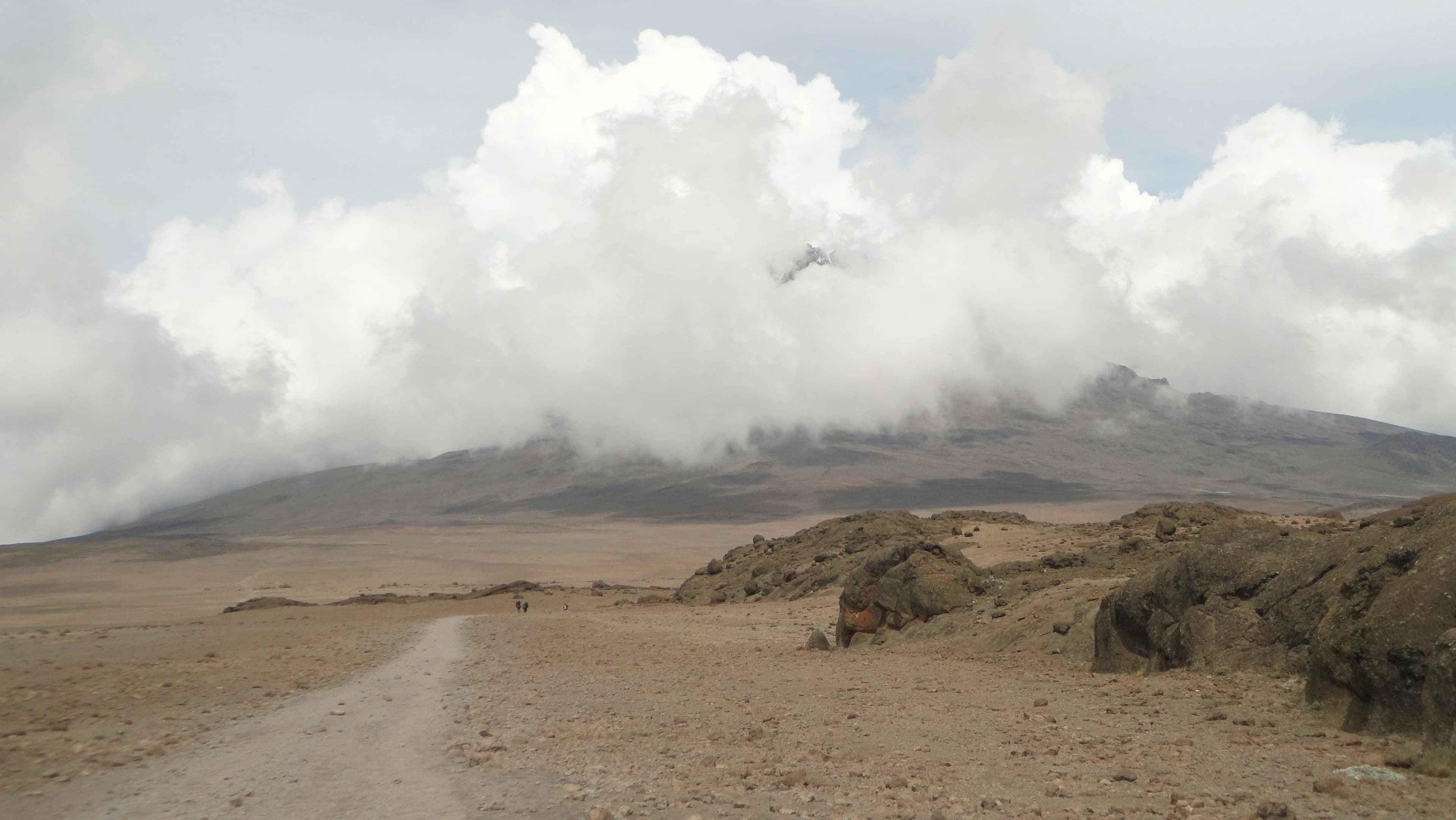
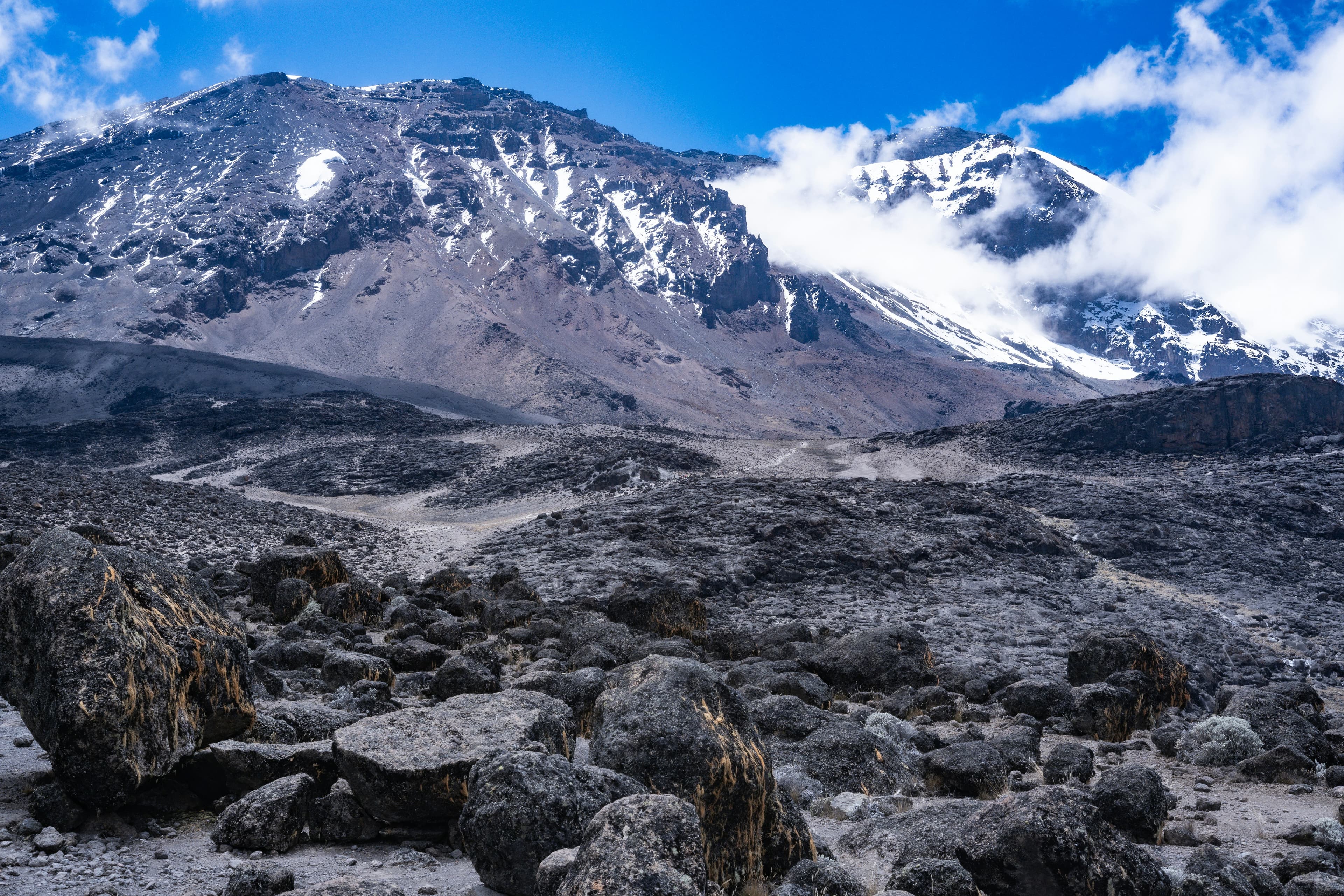
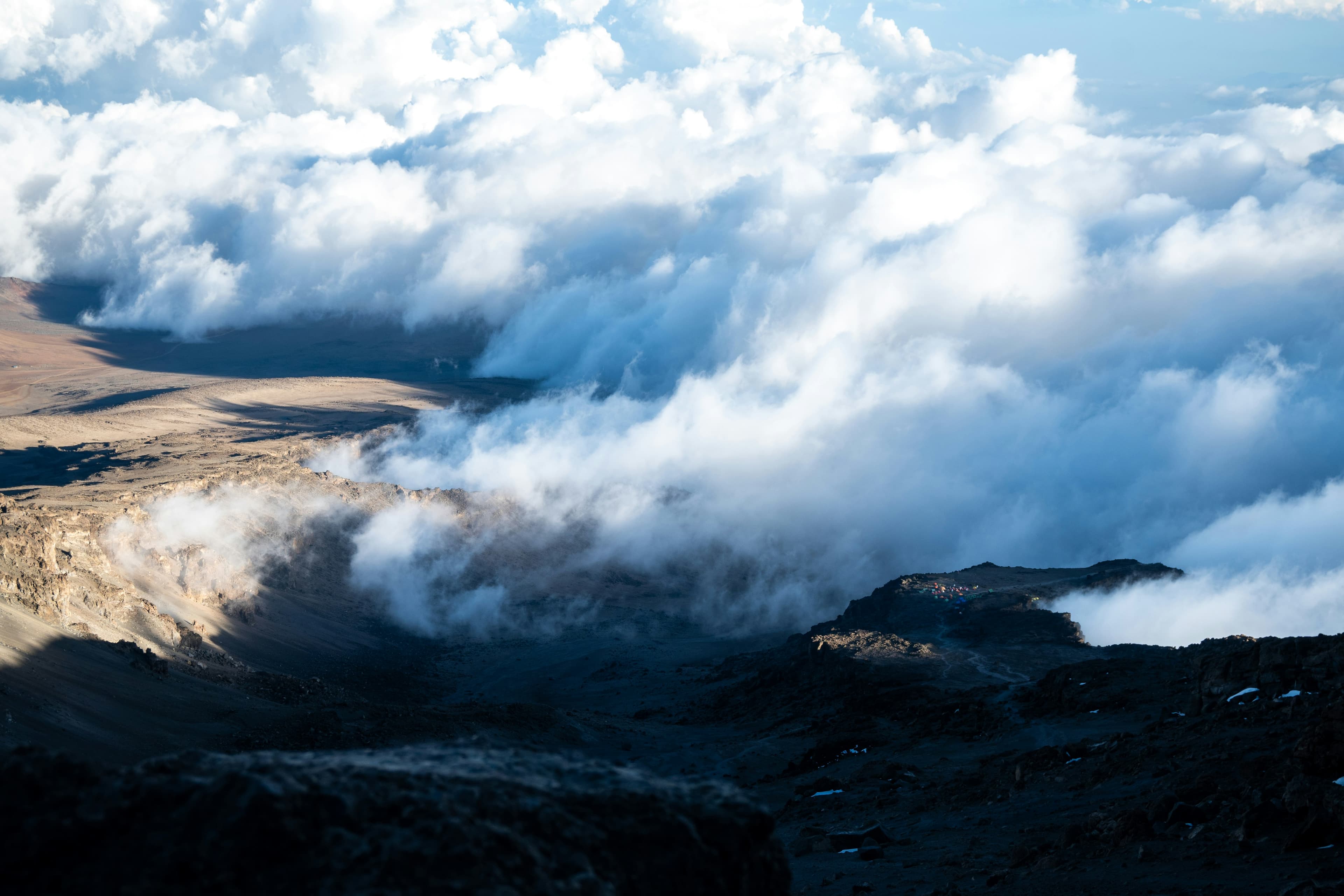
Tour Overview
Conquer Africa's highest peak and one of the world's Seven Summits on this challenging 6-day Kilimanjaro trek via the scenic Marangu Route, known as the "Coca-Cola Route." Summit Uhuru Peak at 5,895 meters (19,341 feet) above sea level, standing on the Roof of Africa with glaciers, breathtaking crater views, and the entire continent stretching below. This is the only Kilimanjaro route offering mountain hut accommodation rather than camping, making it slightly more comfortable while still delivering an authentic mountaineering experience.
6-day Kilimanjaro trek via Marangu Route. Summit Africa's highest peak (5,895m). Mountain hut accommodation, experienced guides, 65-70% success rate. Conquer the Roof of Africa. Book your Kilimanjaro adventure now!
Tour Highlights
Day-by-Day Itinerary
1Arrival in Moshi - Trek Preparation & Briefing
Arrive at Kilimanjaro International Airport where you'll be met and transferred to your hotel in Moshi town (45 minutes), a charming town nestled at the base of Kilimanjaro with stunning mountain views on clear days. Check into Springlands Hotel or similar for rest and acclimatization. In the afternoon (around 3:00 PM), meet your head guide for comprehensive pre-trek briefing covering the route, daily expectations, altitude acclimatization strategies, safety protocols, what to pack in your daypack vs duffel bag (porters carry duffels, you carry daypack), and answer all questions. Guides check your gear - if you need to rent equipment (sleeping bag, hiking poles, gaiters, thermal layers), arrangements are made now ($50 total). Final gear checklist: warm sleeping bag (-10°C rated), insulated jacket, waterproof rain gear, thermal base layers, warm hat and gloves, hiking boots (broken in!), headlamp with extra batteries, water bottles/bladder (3 liters capacity), sunglasses (UV protection essential), sunscreen SPF 50+, personal first aid kit, camera, snacks. Tip: Many trekkers purchase Diamox (acetazolamide) to prevent altitude sickness - consult your doctor before the trip. Enjoy dinner at a local restaurant - Kilimanjaro Coffee Lounge is popular. Rest well, mentally prepare, and set an early alarm. Trek begins tomorrow! The mountain that's dominated the horizon all day will soon be under your feet.
DinnerSpringlands Hotel or similar in Moshi
Arrival in Moshi - Trek Preparation & Briefing
Arrive at Kilimanjaro International Airport where you'll be met and transferred to your hotel in Moshi town (45 minutes), a charming town nestled at the base of Kilimanjaro with stunning mountain views on clear days. Check into Springlands Hotel or similar for rest and acclimatization. In the afternoon (around 3:00 PM), meet your head guide for comprehensive pre-trek briefing covering the route, daily expectations, altitude acclimatization strategies, safety protocols, what to pack in your daypack vs duffel bag (porters carry duffels, you carry daypack), and answer all questions. Guides check your gear - if you need to rent equipment (sleeping bag, hiking poles, gaiters, thermal layers), arrangements are made now ($50 total). Final gear checklist: warm sleeping bag (-10°C rated), insulated jacket, waterproof rain gear, thermal base layers, warm hat and gloves, hiking boots (broken in!), headlamp with extra batteries, water bottles/bladder (3 liters capacity), sunglasses (UV protection essential), sunscreen SPF 50+, personal first aid kit, camera, snacks. Tip: Many trekkers purchase Diamox (acetazolamide) to prevent altitude sickness - consult your doctor before the trip. Enjoy dinner at a local restaurant - Kilimanjaro Coffee Lounge is popular. Rest well, mentally prepare, and set an early alarm. Trek begins tomorrow! The mountain that's dominated the horizon all day will soon be under your feet.
2Mandara Hut - 1,860m to 2,700m (8km, 4-5 hours)
After hearty breakfast (7:00 AM), drive 45 minutes to Marangu Gate (1,860m), the official Kilimanjaro National Park entrance for this route. Complete registration formalities with park authorities (guides handle paperwork, you sign permits). Meet your full trekking crew: assistant guides, porters (who carry your duffel bags, tents, food, water, cooking equipment), and cook. A typical crew for 4 trekkers might include 2 guides, 12 porters, and 1 cook - Kilimanjaro operates a porter-based system providing employment for hundreds of locals. Begin your trek around 10:00 AM through lush montane rainforest - the first of five climate zones you'll traverse. The well-maintained trail gradually ascends through dense vegetation with towering trees, hanging moss, giant ferns, and colorful flowers. Keep eyes out for black and white colobus monkeys swinging through trees, blue monkeys, and vibrant birdlife including turacos and hornbills. The forest canopy provides shade but conditions can be muddy (hence waterproof boots essential). Your guide sets a slow, steady pace - the Swahili phrase "pole pole" (pronounced po-lay po-lay) meaning "slowly slowly" becomes your mantra. Rushing causes altitude sickness; slow and steady wins this race. After 4-5 hours hiking, arrive at Mandara Hut (2,700m) in early afternoon. Mandara consists of wooden A-frame huts with bunk beds (4-6 beds per hut), communal dining hut, and basic toilet facilities. Rest, explore the nearby Maundi Crater (optional 20-minute walk for acclimatization and stunning views of Moshi and Mount Meru), and enjoy hot dinner prepared by your cook. Sleep at 2,700m - first night at altitude.
Breakfast, Lunch (packed), DinnerMandara Hut (2,700m) - mountain huts with bunk beds
Mandara Hut - 1,860m to 2,700m (8km, 4-5 hours)
After hearty breakfast (7:00 AM), drive 45 minutes to Marangu Gate (1,860m), the official Kilimanjaro National Park entrance for this route. Complete registration formalities with park authorities (guides handle paperwork, you sign permits). Meet your full trekking crew: assistant guides, porters (who carry your duffel bags, tents, food, water, cooking equipment), and cook. A typical crew for 4 trekkers might include 2 guides, 12 porters, and 1 cook - Kilimanjaro operates a porter-based system providing employment for hundreds of locals. Begin your trek around 10:00 AM through lush montane rainforest - the first of five climate zones you'll traverse. The well-maintained trail gradually ascends through dense vegetation with towering trees, hanging moss, giant ferns, and colorful flowers. Keep eyes out for black and white colobus monkeys swinging through trees, blue monkeys, and vibrant birdlife including turacos and hornbills. The forest canopy provides shade but conditions can be muddy (hence waterproof boots essential). Your guide sets a slow, steady pace - the Swahili phrase "pole pole" (pronounced po-lay po-lay) meaning "slowly slowly" becomes your mantra. Rushing causes altitude sickness; slow and steady wins this race. After 4-5 hours hiking, arrive at Mandara Hut (2,700m) in early afternoon. Mandara consists of wooden A-frame huts with bunk beds (4-6 beds per hut), communal dining hut, and basic toilet facilities. Rest, explore the nearby Maundi Crater (optional 20-minute walk for acclimatization and stunning views of Moshi and Mount Meru), and enjoy hot dinner prepared by your cook. Sleep at 2,700m - first night at altitude.
3Horombo Hut - 2,700m to 3,720m (12km, 6-8 hours)
Wake early (6:30 AM), breakfast, and pack gear. Porters break camp and overtake you on the trail - they move incredibly fast even carrying heavy loads. Depart Mandara around 8:00 AM, initially continuing through rainforest before emerging into heathland and moorland - the second climate zone. The landscape transforms dramatically: trees give way to giant heathers, groundsels (strange prehistoric-looking plants endemic to high-altitude East Africa), and everlasting flowers. The trail opens up providing your first panoramic views of Kibo Peak's majestic snow-capped summit ahead (weather permitting) and Mount Mawenzi's dramatic jagged peak to the east. The sight is both inspiring and intimidating - that's where you're heading! The path steadily climbs crossing streams and traversing alpine meadows. After 6-8 hours (distance 12km, but slow pace at altitude), arrive at Horombo Hut (3,720m), a larger camp with multiple huts accommodating up to 120 trekkers. Horombo sits on a plateau with spectacular 360-degree views on clear days. Upon arrival, guides check vitals: pulse, blood oxygen levels (pulse oximeter), symptoms assessment for altitude sickness (headache, nausea, dizziness, fatigue). Acclimatization is key. Afternoon acclimatization walk (highly recommended): hike 1-2 hours higher toward Mawenzi or zebra rocks, then return to Horombo for the night - "climb high, sleep low" aids acclimatization. Enjoy hot dinner, socialize with other trekkers in dining hut sharing stories, and rest. You've now gained over 1,000m in altitude - listen to your body.
Breakfast, Lunch (packed), DinnerHorombo Hut (3,720m) - mountain huts
Horombo Hut - 2,700m to 3,720m (12km, 6-8 hours)
Wake early (6:30 AM), breakfast, and pack gear. Porters break camp and overtake you on the trail - they move incredibly fast even carrying heavy loads. Depart Mandara around 8:00 AM, initially continuing through rainforest before emerging into heathland and moorland - the second climate zone. The landscape transforms dramatically: trees give way to giant heathers, groundsels (strange prehistoric-looking plants endemic to high-altitude East Africa), and everlasting flowers. The trail opens up providing your first panoramic views of Kibo Peak's majestic snow-capped summit ahead (weather permitting) and Mount Mawenzi's dramatic jagged peak to the east. The sight is both inspiring and intimidating - that's where you're heading! The path steadily climbs crossing streams and traversing alpine meadows. After 6-8 hours (distance 12km, but slow pace at altitude), arrive at Horombo Hut (3,720m), a larger camp with multiple huts accommodating up to 120 trekkers. Horombo sits on a plateau with spectacular 360-degree views on clear days. Upon arrival, guides check vitals: pulse, blood oxygen levels (pulse oximeter), symptoms assessment for altitude sickness (headache, nausea, dizziness, fatigue). Acclimatization is key. Afternoon acclimatization walk (highly recommended): hike 1-2 hours higher toward Mawenzi or zebra rocks, then return to Horombo for the night - "climb high, sleep low" aids acclimatization. Enjoy hot dinner, socialize with other trekkers in dining hut sharing stories, and rest. You've now gained over 1,000m in altitude - listen to your body.
4Kibo Hut - 3,720m to 4,703m (10km, 6-8 hours)
Another early start (7:00 AM breakfast, 8:00 AM departure). Today's trek takes you into the alpine desert zone - vegetation almost entirely disappears leaving only volcanic rock, sand, and occasional hardy lichens. The landscape becomes stark, barren, and otherworldly - you're now on the moon-like Saddle, a high-altitude desert plateau between Mawenzi and Kibo peaks. The trail gradually but relentlessly ascends across this lunar landscape with little shade - sun protection critical (sunscreen, hat, sunglasses). The thin air becomes noticeable - breathing requires more effort, pace slows further. "Pole pole" is crucial. Many trekkers experience mild altitude symptoms here: slight headache, reduced appetite, mild nausea, shortness of breath. This is normal; severe symptoms (disorientation, inability to walk straight, persistent vomiting) require descent. Drink copious water (3-4 liters daily), maintain calorie intake even if not hungry, and move slowly. After 6-8 hours crossing the Saddle, arrive at Kibo Hut (4,703m) in early-mid afternoon. Kibo Hut is basic stone shelters at the base of Kibo Peak's final ascent - your summit launch point. The atmosphere is anticipatory and nervous - tonight you attempt the summit. Guides brief you on summit night: wake at 11:00 PM, depart midnight, 6-7 hours up, 3-4 hours down, return to Kibo for brief rest, then descend to Horombo same day (brutal 10-15 hour day total). EAT DINNER even if not hungry (you need calories), organize summit gear (headlamp with fresh batteries, warm layers, snacks, water), and try to sleep 5:00 PM - 11:00 PM (difficult given altitude, anticipation, and early wake-up). Summit night begins at midnight.
Breakfast, Lunch (packed), DinnerKibo Hut (4,703m) - basic stone shelters
Kibo Hut - 3,720m to 4,703m (10km, 6-8 hours)
Another early start (7:00 AM breakfast, 8:00 AM departure). Today's trek takes you into the alpine desert zone - vegetation almost entirely disappears leaving only volcanic rock, sand, and occasional hardy lichens. The landscape becomes stark, barren, and otherworldly - you're now on the moon-like Saddle, a high-altitude desert plateau between Mawenzi and Kibo peaks. The trail gradually but relentlessly ascends across this lunar landscape with little shade - sun protection critical (sunscreen, hat, sunglasses). The thin air becomes noticeable - breathing requires more effort, pace slows further. "Pole pole" is crucial. Many trekkers experience mild altitude symptoms here: slight headache, reduced appetite, mild nausea, shortness of breath. This is normal; severe symptoms (disorientation, inability to walk straight, persistent vomiting) require descent. Drink copious water (3-4 liters daily), maintain calorie intake even if not hungry, and move slowly. After 6-8 hours crossing the Saddle, arrive at Kibo Hut (4,703m) in early-mid afternoon. Kibo Hut is basic stone shelters at the base of Kibo Peak's final ascent - your summit launch point. The atmosphere is anticipatory and nervous - tonight you attempt the summit. Guides brief you on summit night: wake at 11:00 PM, depart midnight, 6-7 hours up, 3-4 hours down, return to Kibo for brief rest, then descend to Horombo same day (brutal 10-15 hour day total). EAT DINNER even if not hungry (you need calories), organize summit gear (headlamp with fresh batteries, warm layers, snacks, water), and try to sleep 5:00 PM - 11:00 PM (difficult given altitude, anticipation, and early wake-up). Summit night begins at midnight.
5SUMMIT DAY! - Kibo to Uhuru Peak (5,895m) to Horombo (19km, 10-15 hours)
MIDNIGHT WAKE-UP. This is it - summit day, the reason you're here, the culmination of days of effort. Dress in ALL warm layers (temperatures -10 to -20°C at summit), drink hot tea/porridge (light breakfast), check headlamp, fill water bottles (insulated to prevent freezing), grab snacks, and depart around 12:30-1:00 AM under starlight. Why night summit? 1) The volcanic scree is frozen making it easier to climb, 2) You summit at sunrise - magical, 3) It's just too far to do in daylight. The ascent is extremely challenging - steep switchbacks up endless volcanic scree and rock. Two steps forward, one step slides back. The altitude makes every step laborious - breathing is hard, legs are heavy, it's freezing, you're exhausted. This is 70% mental. Your headlamp illuminates only the few meters ahead - the line of lights from other trekkers snakes up the mountain into darkness. Pole pole. One step at a time. After 5-6 grueling hours (around 5:30-6:30 AM), reach Gilman's Point (5,685m) on the crater rim - your first major milestone and sunrise! The sun rising over Mawenzi Peak while you stand on Kilimanjaro's crater rim is breathtaking. You've technically "summited" Kilimanjaro, but the true summit, Uhuru Peak, is another 1-1.5 hours hiking along the crater rim. If you have energy and no severe altitude issues, continue the final push. The crater rim walk reveals stunning glaciers (though sadly shrinking due to climate change), the ash pit, and dramatic crater formations. Finally, after 6-7 hours total from Kibo, reach UHURU PEAK (5,895m / 19,341 feet) - Africa's highest point, the Roof of Africa, one of the Seven Summits! The iconic wooden sign marks your achievement. Emotions overwhelm - tears, joy, disbelief, exhaustion, pride. Take summit photos (quickly - it's freezing and altitude affects thinking), celebrate briefly, then begin descent. Descending is hard on knees but easier on lungs. Return to Gilman's Point, then descend the scree slopes (much faster going down - you "ski" down the loose rock). Arrive back at Kibo Hut around 10:00-11:00 AM, rest briefly (1 hour), pack, then continue descending to Horombo Hut (3,720m) arriving mid-late afternoon. Total day: 10-15 hours, 19km, 1,200m up and 2,100m down. You're exhausted but euphoric. Celebrate with your crew, enjoy dinner, and sleep deeply having conquered Kilimanjaro!
Breakfast (midnight snack), Lunch (packed), DinnerHorombo Hut (3,720m) - mountain huts
SUMMIT DAY! - Kibo to Uhuru Peak (5,895m) to Horombo (19km, 10-15 hours)
MIDNIGHT WAKE-UP. This is it - summit day, the reason you're here, the culmination of days of effort. Dress in ALL warm layers (temperatures -10 to -20°C at summit), drink hot tea/porridge (light breakfast), check headlamp, fill water bottles (insulated to prevent freezing), grab snacks, and depart around 12:30-1:00 AM under starlight. Why night summit? 1) The volcanic scree is frozen making it easier to climb, 2) You summit at sunrise - magical, 3) It's just too far to do in daylight. The ascent is extremely challenging - steep switchbacks up endless volcanic scree and rock. Two steps forward, one step slides back. The altitude makes every step laborious - breathing is hard, legs are heavy, it's freezing, you're exhausted. This is 70% mental. Your headlamp illuminates only the few meters ahead - the line of lights from other trekkers snakes up the mountain into darkness. Pole pole. One step at a time. After 5-6 grueling hours (around 5:30-6:30 AM), reach Gilman's Point (5,685m) on the crater rim - your first major milestone and sunrise! The sun rising over Mawenzi Peak while you stand on Kilimanjaro's crater rim is breathtaking. You've technically "summited" Kilimanjaro, but the true summit, Uhuru Peak, is another 1-1.5 hours hiking along the crater rim. If you have energy and no severe altitude issues, continue the final push. The crater rim walk reveals stunning glaciers (though sadly shrinking due to climate change), the ash pit, and dramatic crater formations. Finally, after 6-7 hours total from Kibo, reach UHURU PEAK (5,895m / 19,341 feet) - Africa's highest point, the Roof of Africa, one of the Seven Summits! The iconic wooden sign marks your achievement. Emotions overwhelm - tears, joy, disbelief, exhaustion, pride. Take summit photos (quickly - it's freezing and altitude affects thinking), celebrate briefly, then begin descent. Descending is hard on knees but easier on lungs. Return to Gilman's Point, then descend the scree slopes (much faster going down - you "ski" down the loose rock). Arrive back at Kibo Hut around 10:00-11:00 AM, rest briefly (1 hour), pack, then continue descending to Horombo Hut (3,720m) arriving mid-late afternoon. Total day: 10-15 hours, 19km, 1,200m up and 2,100m down. You're exhausted but euphoric. Celebrate with your crew, enjoy dinner, and sleep deeply having conquered Kilimanjaro!
6Horombo to Marangu Gate - Descent & Celebration (20km, 5-7 hours)
Final day on the mountain. After breakfast, begin the long descent from Horombo (3,720m) all the way to Marangu Gate (1,860m) - nearly 2,000m descent covering 20km over 5-7 hours. Your knees will protest, but spirits are high. Retrace your route through moorland, heathland, and back into lush rainforest. The oxygen-rich air at lower elevations feels incredible - breathing is easy, energy returns, appetite roars back. Take your time, use hiking poles to save knees, and savor your final hours on Kilimanjaro. Arrive at Marangu Gate by early-mid afternoon where you sign out of the park register and receive your official summit certificate - a treasured souvenir. Certificates are presented in a small ceremony: gold-edged certificate for Uhuru Peak summiters, green certificate for those who reached Gilman's Point. Take final photos with your guide and porters. TIP YOUR CREW NOW - this is customary and expected. Suggested amounts: $20-25 per day for head guide, $15 per day for assistant guide, $10 per day for cook, $8-10 per day per porter. For a 6-day trek with typical crew, budget $250-300 total. Tipping is often done as a group with a small ceremony. Transfer back to Springlands Hotel in Moshi for hot shower (glorious!), celebratory dinner, and Kilimanjaro beer. Share summit stories with other trekkers. Your legs are tired, body is sore, but soul is fulfilled - you climbed Kilimanjaro! Optional: Many trekkers extend with beach relaxation in Zanzibar (1-hour flight) or safari in Serengeti/Ngorongoro to celebrate.
Breakfast, Lunch (packed)Springlands Hotel or similar in Moshi (included) or airport transfer for departures
Horombo to Marangu Gate - Descent & Celebration (20km, 5-7 hours)
Final day on the mountain. After breakfast, begin the long descent from Horombo (3,720m) all the way to Marangu Gate (1,860m) - nearly 2,000m descent covering 20km over 5-7 hours. Your knees will protest, but spirits are high. Retrace your route through moorland, heathland, and back into lush rainforest. The oxygen-rich air at lower elevations feels incredible - breathing is easy, energy returns, appetite roars back. Take your time, use hiking poles to save knees, and savor your final hours on Kilimanjaro. Arrive at Marangu Gate by early-mid afternoon where you sign out of the park register and receive your official summit certificate - a treasured souvenir. Certificates are presented in a small ceremony: gold-edged certificate for Uhuru Peak summiters, green certificate for those who reached Gilman's Point. Take final photos with your guide and porters. TIP YOUR CREW NOW - this is customary and expected. Suggested amounts: $20-25 per day for head guide, $15 per day for assistant guide, $10 per day for cook, $8-10 per day per porter. For a 6-day trek with typical crew, budget $250-300 total. Tipping is often done as a group with a small ceremony. Transfer back to Springlands Hotel in Moshi for hot shower (glorious!), celebratory dinner, and Kilimanjaro beer. Share summit stories with other trekkers. Your legs are tired, body is sore, but soul is fulfilled - you climbed Kilimanjaro! Optional: Many trekkers extend with beach relaxation in Zanzibar (1-hour flight) or safari in Serengeti/Ngorongoro to celebrate.
What's Included & Excluded
Included in Price
- Kilimanjaro National Park entrance fees and permits
- Professional certified mountain guide (KINAPA licensed)
- Assistant guide (required for groups 4+)
- Experienced porters (carry your duffel bag, set up camp)
- Mountain cook and kitchen crew
- All meals on mountain (full board) - breakfast, lunch, dinner, snacks
- Mountain hut accommodation (Mandara, Horombo, Kibo huts)
- Treated/purified drinking water on mountain
- 1 night hotel before trek in Moshi (pre-trek briefing)
- 1 night hotel after trek in Moshi (celebration!)
- Airport transfers (Kilimanjaro Airport)
- Emergency oxygen and first aid kit
- Government taxes and rescue fees
Not Included
- International flights
- Tanzania visa ($50 USD)
- Travel insurance (mandatory - must cover altitude trekking to 6,000m)
- Tips for guide, porters, and cook ($250-300 total suggested for 6-day trek)
- Personal trekking gear (sleeping bag, hiking poles - rental available $50)
- Alcoholic beverages and sodas
- Personal medications and altitude sickness drugs (Diamox)
- Additional hotel nights in Moshi/Arusha
- Optional safari before/after climb
- Laundry and personal expenses
Tour Requirements
- Valid passport with 6+ months validity
- Tanzania visa ($50 USD)
- Comprehensive travel/medical insurance covering altitude trekking to 6,000m
- Good physical fitness - ability to hike 6-8 hours daily for multiple days
- Medical clearance form (operators provide) - consult doctor if health concerns
- Altitude acclimatization - avoid flying directly to Kilimanjaro from sea level
- Complete gear list (sleeping bag, boots, warm layers, rain gear)
- Mental preparation for challenging summit night
- Sufficient funds for tips ($250-300) and emergencies
- Yellow fever vaccination if arriving from endemic countries
Frequently Asked Questions
Commonly asked questions about this tour
What is the success rate for reaching Uhuru Peak on the Marangu Route?
Marangu Route has approximately 65-70% summit success rate to Uhuru Peak (5,895m). Success rates depend heavily on factors: physical fitness, proper acclimatization, weather conditions, individual altitude tolerance, and pacing. Marangu's success rate is slightly lower than longer routes (Lemosho 85%, Machame 75%) because it's the fastest route (5-6 days) giving less acclimatization time. However, adding an extra acclimatization day at Horombo (7-day Marangu variant) increases success to 80%+. Even if you don't reach Uhuru, reaching Gilman's Point (5,685m) on the crater rim is a significant achievement - you've still summited Kilimanjaro, just not the highest point. Altitude sickness affects people unpredictably regardless of fitness level.
How difficult is climbing Kilimanjaro? Do I need mountaineering experience?
Kilimanjaro requires NO technical climbing skills - it's a high-altitude trek, not a technical climb. No ropes, ice axes, or climbing experience needed. However, it's physically and mentally demanding. Difficulty comes from: 1) ALTITUDE - 5,895m with thin oxygen (50% of sea level oxygen at summit), 2) SUMMIT NIGHT - 6-7 hours climbing in darkness and extreme cold, 3) DURATION - multi-day endurance, 4) PHYSICAL DEMAND - hiking 6-8 hours daily carrying a daypack. Required fitness: ability to hike 6-8 hours for multiple consecutive days. Training recommendations: cardio (running, cycling, swimming) 3-4x/week for 2-3 months, leg strength training, practice hikes with elevation gain carrying a backpack, and altitude training if accessible. Kilimanjaro is achievable for determined fit individuals without prior climbing experience.
What about altitude sickness? How dangerous is it?
Altitude sickness (Acute Mountain Sickness - AMS) affects 75%+ of Kilimanjaro trekkers to some degree. Mild symptoms (headache, nausea, fatigue, shortness of breath, poor sleep) are normal and manageable. Severe altitude sickness (HAPE - High Altitude Pulmonary Edema, HACE - High Altitude Cerebral Edema) is life-threatening but rare (~1% of trekkers) and requires immediate descent. PREVENTION: 1) Proper acclimatization - "pole pole" (go slowly), 2) Hydrate heavily (3-4 liters water daily), 3) Climb high, sleep low, 4) Consider Diamox (consult doctor), 5) Eat well even if not hungry, 6) Don't push through severe symptoms. Guides monitor health daily. If you experience confusion, inability to walk straight, persistent vomiting, or severe breathlessness at rest - DESCEND IMMEDIATELY. Listen to your guide. Most trekkers complete successfully with mild temporary discomfort.
Why choose Marangu Route over other routes like Machame or Lemosho?
Marangu Route advantages: 1) HUT ACCOMMODATION - only route with mountain huts (sleeping in proper bunk beds vs tents), more comfortable especially in rain, 2) LESS EXPENSIVE - simpler logistics mean lower cost, 3) SHORTER - 5-6 days vs 6-8 days for other routes saving time, 4) WELL-ESTABLISHED - most popular route, clear trails, good infrastructure. Disadvantages: 1) LOWER SUCCESS RATE - faster ascent means less acclimatization time, 2) MORE CROWDED - popularity means more trekkers, 3) SAME ROUTE UP AND DOWN - less scenic variety, 4) REPUTATION - dubbed "Coca-Cola Route" suggesting it's easier (misleading - all Kilimanjaro routes are challenging). Best for: travelers with limited time, those preferring hut comfort over camping, budget-conscious trekkers. For higher success rates, consider 7-8 day Lemosho or Machame routes.
What gear do I need? Can I rent equipment in Tanzania?
ESSENTIAL GEAR: Warm sleeping bag (-10°C rated), broken-in hiking boots (waterproof), insulated jacket, waterproof rain jacket and pants, thermal base layers (top/bottom), fleece mid-layer, warm hat, gloves (liner + insulated), hiking poles (crucial for descent), daypack (25-30L), headlamp + extra batteries, water bottles/bladder (3L capacity), sunglasses (UV protection), sunscreen SPF 50+, first aid kit. RENTAL AVAILABLE in Moshi/Arusha: sleeping bags ($10-15), hiking poles ($10), insulated jackets ($15), gaiters ($5) - total ~$50 for full rental package. Quality varies so inspect carefully. PURCHASE IN ARUSHA: budget options available at markets/outdoor stores. Many trekkers buy gear locally to avoid checked baggage fees. CRITICAL: Do NOT skimp on footwear - blisters end climbs. Break in boots thoroughly before departure.
When is the best time to climb Kilimanjaro?
BEST MONTHS (Dry Seasons): JANUARY-MARCH - clearer skies, less rain, cold at summit, popular period. JUNE-OCTOBER - driest months, peak season, cold temperatures, excellent visibility, most crowded, highest prices. AVOID: APRIL-MAY (long rains) - heavy rain, muddy trails, poor visibility, dangerous conditions, lower success rates, some operators close. NOVEMBER (short rains) - unpredictable weather. CONSIDER: Shoulder seasons (November, early December) offer fewer crowds and lower prices but less reliable weather. Full moon periods are popular for summit night (extra light visibility). Kilimanjaro can be climbed year-round, but dry seasons optimize your chances. Book 3-6 months advance for dry season, less advance for wet season.
How much should I tip the guide, porters, and cook?
Tipping is customary and represents a significant portion of crew income. RECOMMENDED AMOUNTS (per person for 6-day Marangu): HEAD GUIDE: $20-25/day = $120-150 total, ASSISTANT GUIDE: $15/day = $90 total, COOK: $10-12/day = $60-70 total, PORTERS: $8-10/day per porter = $50-60 per porter (typical crew has 2-3 porters per trekker). TOTAL BUDGET: $250-300 per trekker for 6-day climb. Group tips are pooled and distributed by lead guide during ceremony on final day. Bring US dollars (small bills - twenties, tens, fives) for tipping. Larger groups can organize group tip pool. Some operators include tip guidelines in pre-trek materials. Quality service deserves generous tips - these crews work incredibly hard in harsh conditions ensuring your safety and success.
Can I climb Kilimanjaro solo or must I join a group?
Kilimanjaro National Park regulations REQUIRE all climbers to hire registered guides and porters - independent/solo climbing is prohibited for safety and economic reasons (supporting local employment). However, you can book as a solo traveler and climb with just your private guide and porter team (minimum 1 guide + 2-3 porters), or join a group departure with other trekkers. SOLO BOOKING (private climb): More expensive ($2,200-2,500) as you cover full crew costs, but you set the pace and have flexibility. GROUP BOOKING: More affordable ($1,800-2,200) sharing costs with others, social experience, but must accommodate group pace and preferences. Both options work well. Solo travelers concerned about social isolation can often join scheduled group departures coordinated by operators.
Book This Tour
Best Time to Visit
Need Help?
Contact us for customizations, group bookings, or special requests.